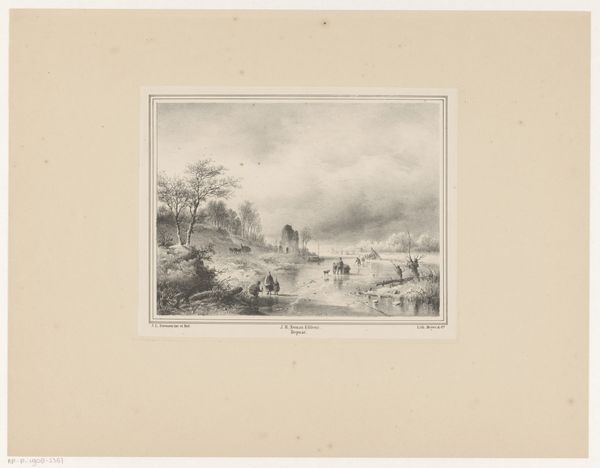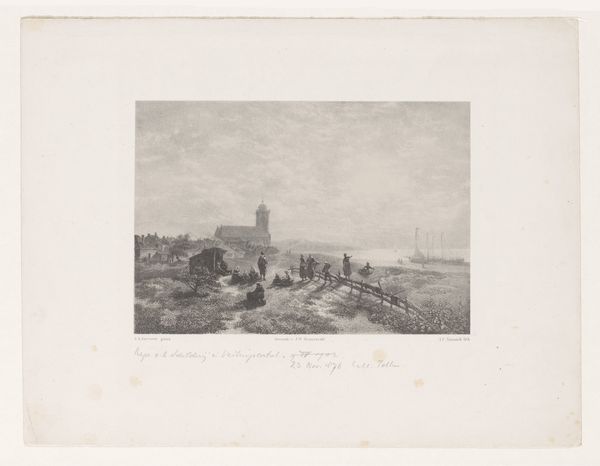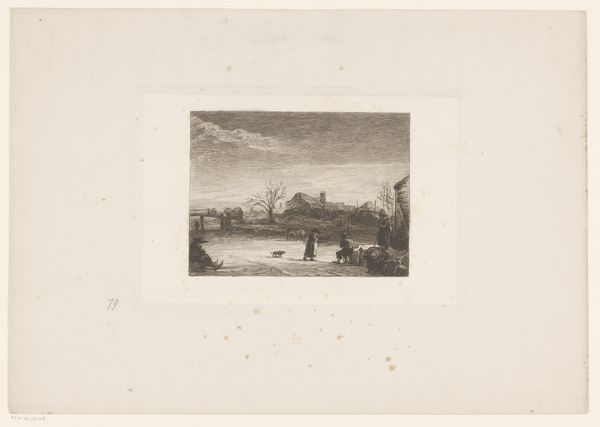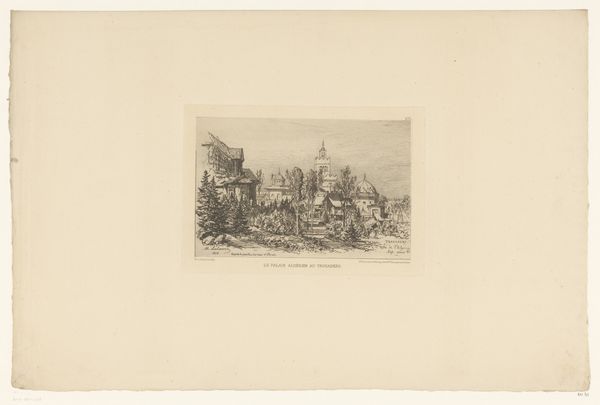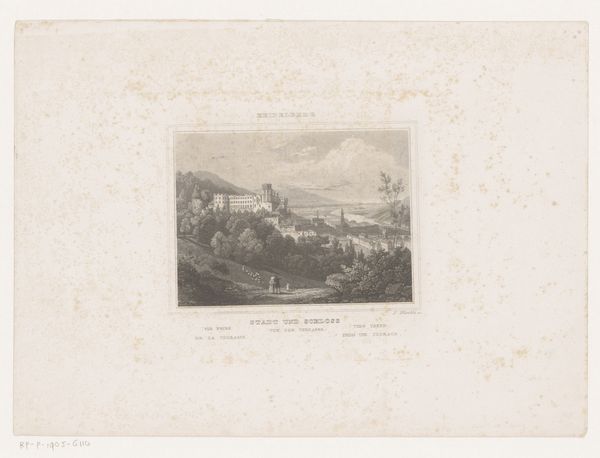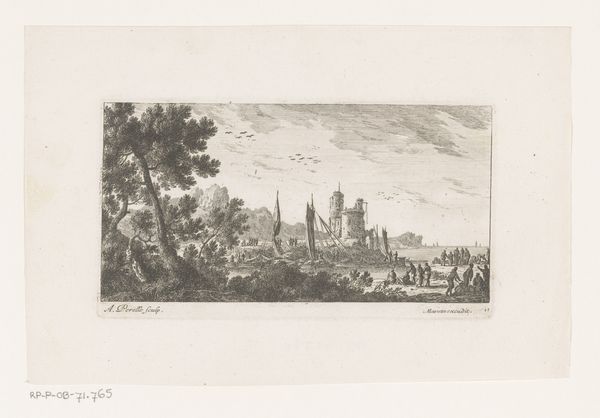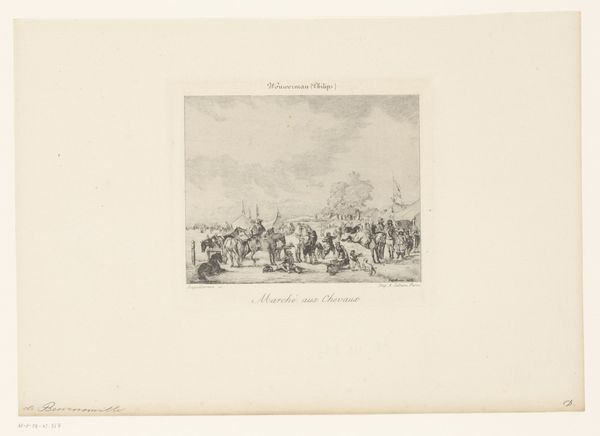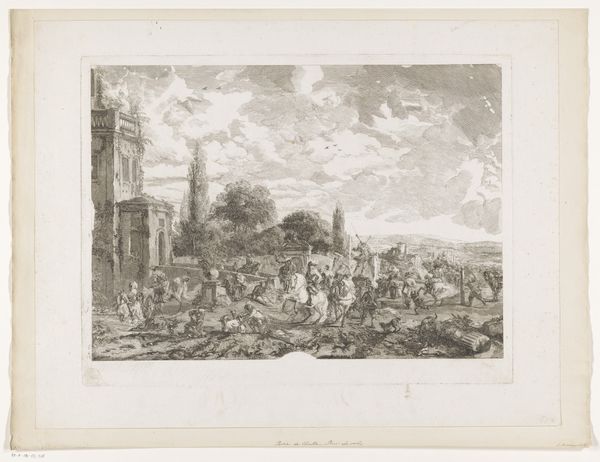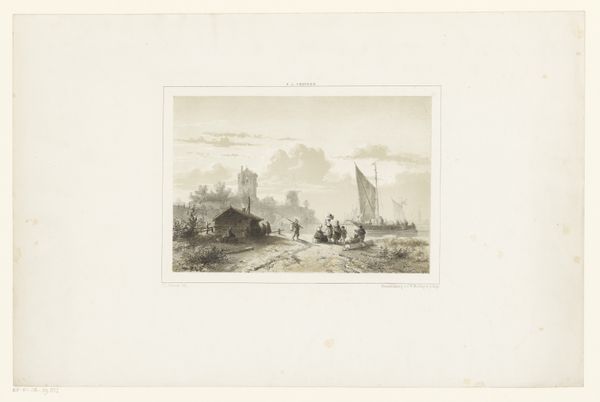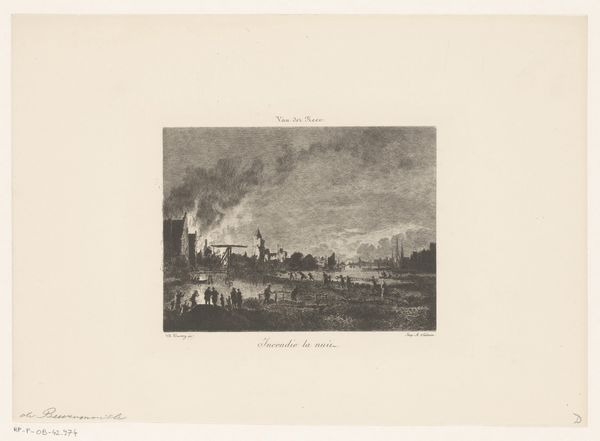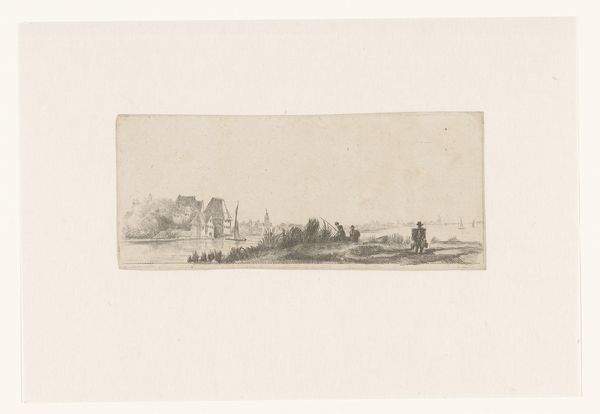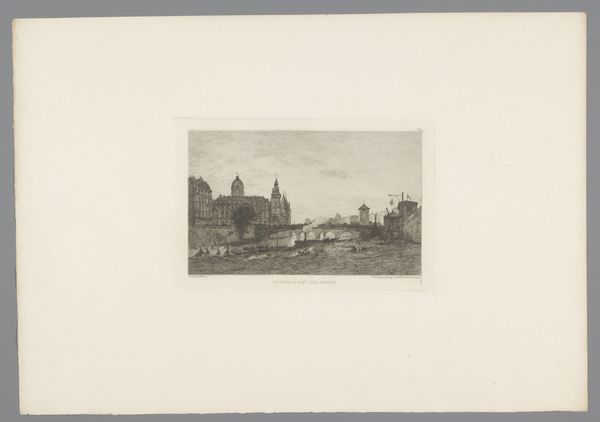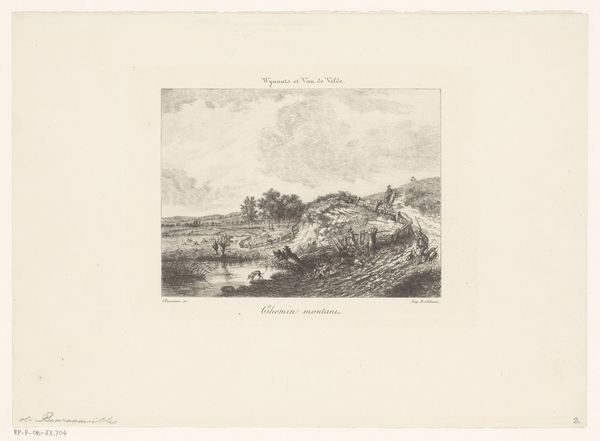
print, etching, engraving
# print
#
etching
#
old engraving style
#
landscape
#
genre-painting
#
history-painting
#
engraving
Dimensions: height 121 mm, width 202 mm
Copyright: Rijks Museum: Open Domain
Curator: This is a print by Emile Frédéric Salmon entitled "Landscape with the Watergeuzen before Leiden," created sometime between 1851 and 1880. Editor: My first impression is of a scene charged with expectation, rendered in very detailed, almost miniaturist strokes. You can almost feel the tension. Curator: That tension is key. This piece refers to the Watergeuzen, or Sea Beggars, a vital group of Dutch privateers in the Eighty Years' War. The context here is the siege of Leiden. The print commemorates, perhaps idealizes, a pivotal moment in Dutch history. Editor: Looking at it from a craft perspective, the use of etching and engraving—multiple printmaking processes combined, I imagine—allows for this incredible density of detail, almost photographic. How was its distribution controlled in a society still obsessed by uniqueness? Curator: Good question. Prints like these were powerful tools of propaganda. Images could be widely disseminated, reinforcing a shared national identity and solidifying the historical narrative. This was made affordable enough to have wide impact beyond elite circles. Editor: Yes, and thinking about the windmills in the background— they speak of a kind of localized control over environment, converting wind to energy, allowing people in this region to have their own source of production rather than it coming in through trade elsewhere. That feels thematically resonant to the rebellion it represents. Curator: Exactly. It reinforces a sense of self-reliance, a key theme in the Dutch revolt against Spanish rule. The placement of the windmills really contextualizes their local presence in the revolution. Editor: Also, consider how prints as multiples democratized access to imagery at a time when paintings remained largely in the hands of the elite. Here we see rebellion through a printed resistance. It allowed an artist like Salmon to weigh in on, and help shape, public memory. Curator: A fine point. It moves beyond commemoration. Editor: Well, for me this work underscores the potent political function of reproducible art in shaping a collective identity. Curator: And for me, it's a reminder of the power of images to rally populations around shared histories and beliefs, for better or worse.
Comments
No comments
Be the first to comment and join the conversation on the ultimate creative platform.

